Sheraz Khan
A Comment On "The Illusion of Thinking": Reframing the Reasoning Cliff as an Agentic Gap
Jun 23, 2025Abstract:The recent work by Shojaee et al. (2025), titled The Illusion of Thinking: Understanding the Strengths and Limitations of Reasoning Models via the Lens of Problem Complexity, presents a compelling empirical finding, a reasoning cliff, where the performance of Large Reasoning Models (LRMs) collapses beyond a specific complexity threshold, which the authors posit as an intrinsic scaling limitation of Chain-of-Thought (CoT) reasoning. This commentary, while acknowledging the study's methodological rigor, contends that this conclusion is confounded by experimental artifacts. We argue that the observed failure is not evidence of a fundamental cognitive boundary, but rather a predictable outcome of system-level constraints in the static, text-only evaluation paradigm, including tool use restrictions, context window recall issues, the absence of crucial cognitive baselines, inadequate statistical reporting, and output generation limits. We reframe this performance collapse through the lens of an agentic gap, asserting that the models are not failing at reasoning, but at execution within a profoundly restrictive interface. We empirically substantiate this critique by demonstrating a striking reversal. A model, initially declaring a puzzle impossible when confined to text-only generation, now employs agentic tools to not only solve it but also master variations of complexity far beyond the reasoning cliff it previously failed to surmount. Additionally, our empirical analysis of tool-enabled models like o4-mini and GPT-4o reveals a hierarchy of agentic reasoning, from simple procedural execution to complex meta-cognitive self-correction, which has significant implications for how we define and measure machine intelligence. The illusion of thinking attributed to LRMs is less a reasoning deficit and more a consequence of an otherwise capable mind lacking the tools for action.
Contextual Minimum-Norm Estimates (CMNE): A Deep Learning Method for Source Estimation in Neuronal Networks
Sep 05, 2019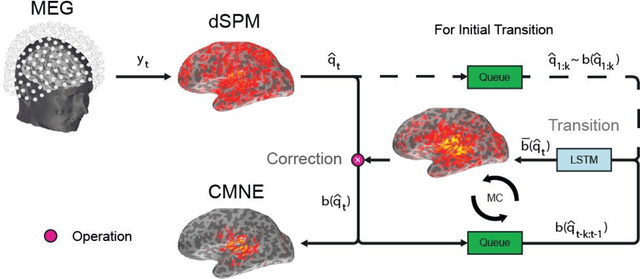
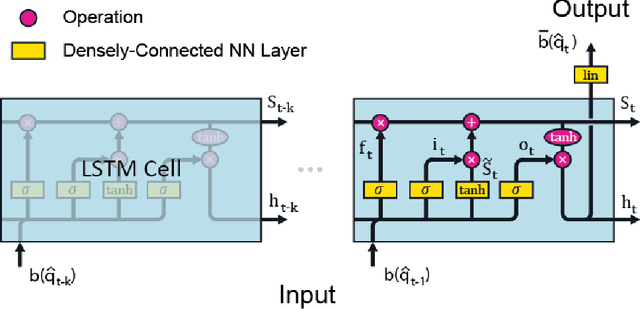
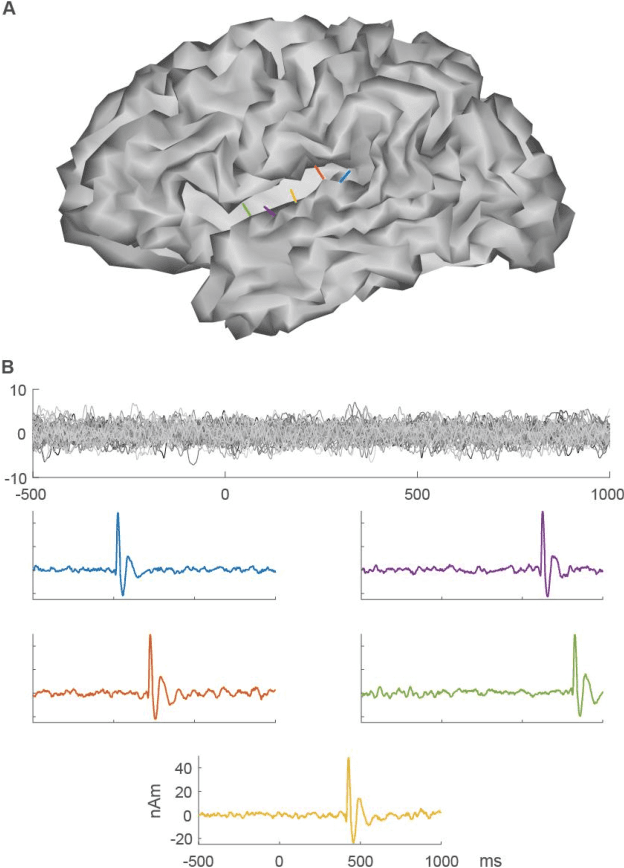
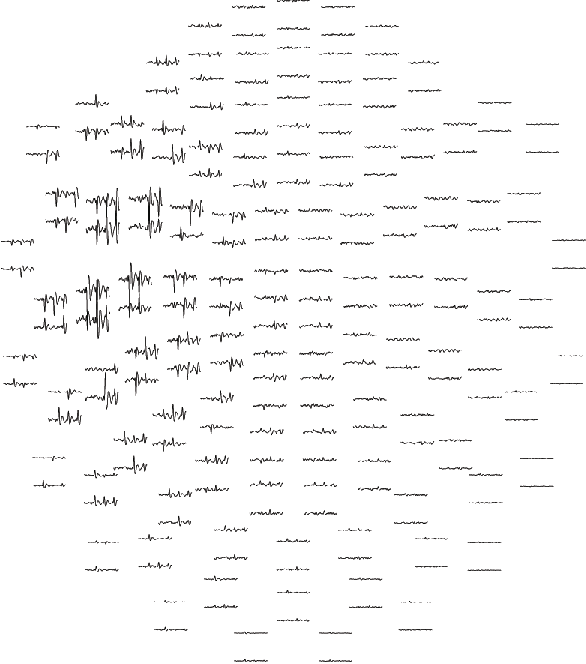
Abstract:Magnetoencephalography (MEG) and Electroencephalography (EEG) source estimates have thus far mostly been derived sample by sample, i.e., independent of each other in time. However, neuronal assemblies are heavily interconnected, constraining the temporal evolution of neural activity in space as detected by MEG and EEG. The observed neural currents are thus highly context dependent. Here, a new method is presented which integrates predictive deep learning networks with the Minimum-Norm Estimates (MNE) approach. Specifically, we employ Long Short-Term Memory (LSTM) networks, a type of recurrent neural network, for predicting brain activity. Because we use past activity (context) in the estimation, we call our method Contextual MNE (CMNE). We demonstrate that these contextual algorithms can be used for predicting activity based on previous brain states and when used in conjunction with MNE, they lead to more accurate source estimation. To evaluate the performance of CMNE, it was tested on simulated and experimental data from human auditory evoked response experiments.
Maturation Trajectories of Cortical Resting-State Networks Depend on the Mediating Frequency Band
Feb 13, 2018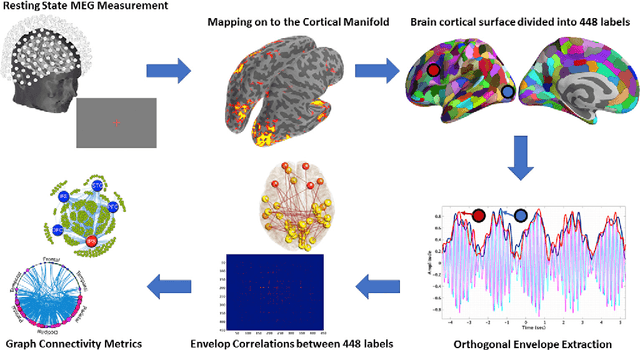
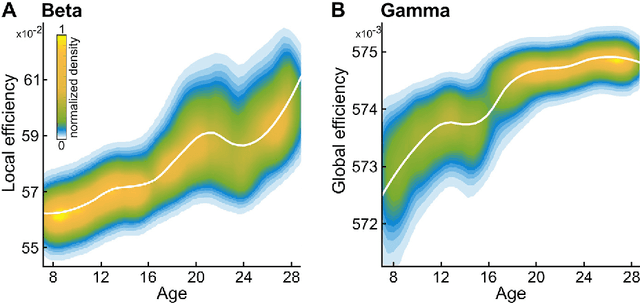
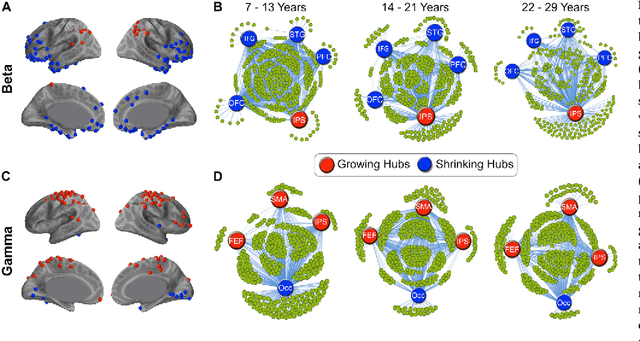
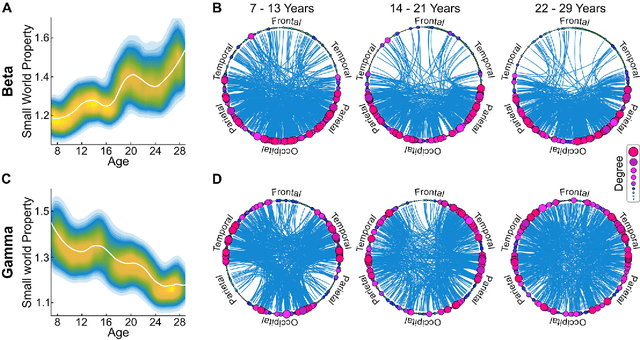
Abstract:The functional significance of resting state networks and their abnormal manifestations in psychiatric disorders are firmly established, as is the importance of the cortical rhythms in mediating these networks. Resting state networks are known to undergo substantial reorganization from childhood to adulthood, but whether distinct cortical rhythms, which are generated by separable neural mechanisms and are often manifested abnormally in psychiatric conditions, mediate maturation differentially, remains unknown. Using magnetoencephalography (MEG) to map frequency band specific maturation of resting state networks from age 7 to 29 in 162 participants (31 independent), we found significant changes with age in networks mediated by the beta (13-30Hz) and gamma (31-80Hz) bands. More specifically, gamma band mediated networks followed an expected asymptotic trajectory, but beta band mediated networks followed a linear trajectory. Network integration increased with age in gamma band mediated networks, while local segregation increased with age in beta band mediated networks. Spatially, the hubs that changed in importance with age in the beta band mediated networks had relatively little overlap with those that showed the greatest changes in the gamma band mediated networks. These findings are relevant for our understanding of the neural mechanisms of cortical maturation, in both typical and atypical development.
 Add to Chrome
Add to Chrome Add to Firefox
Add to Firefox Add to Edge
Add to Edge